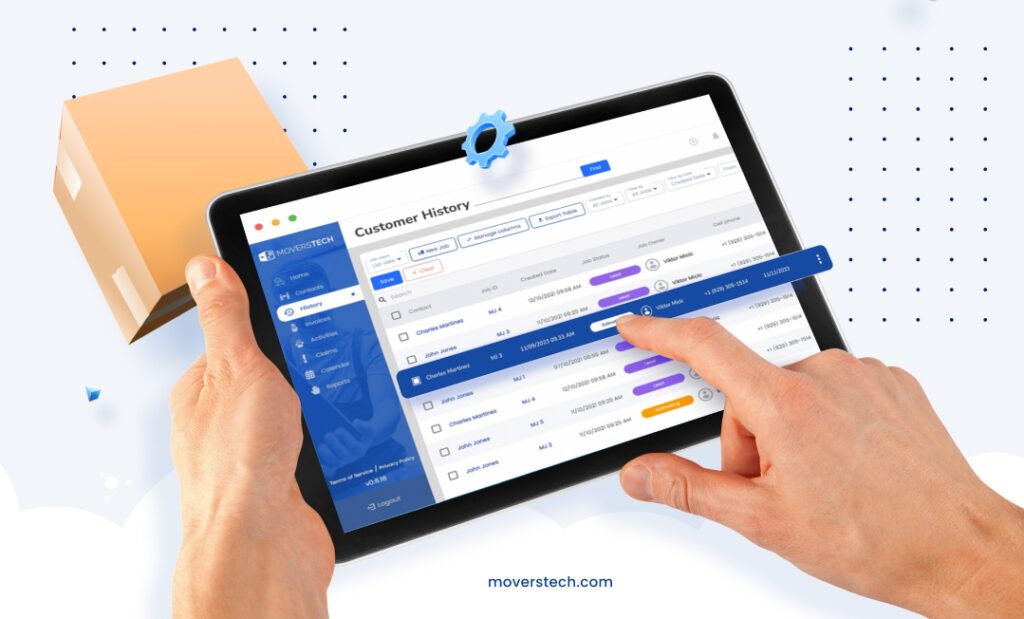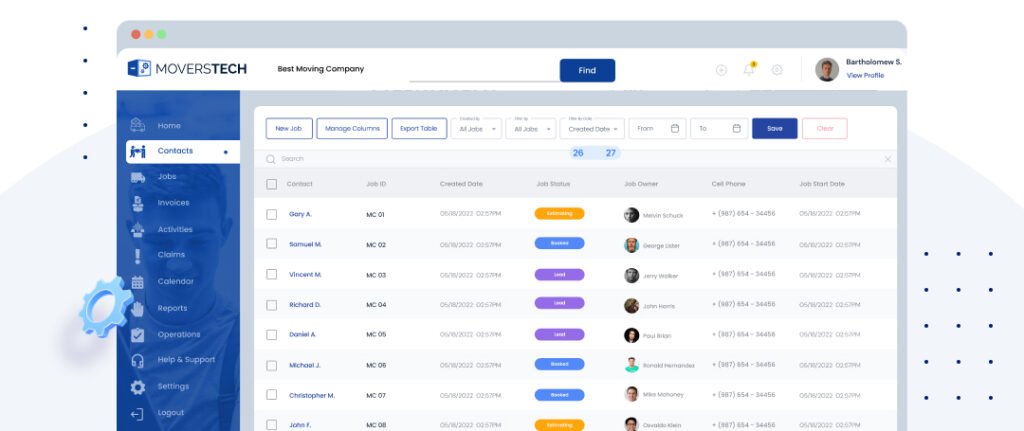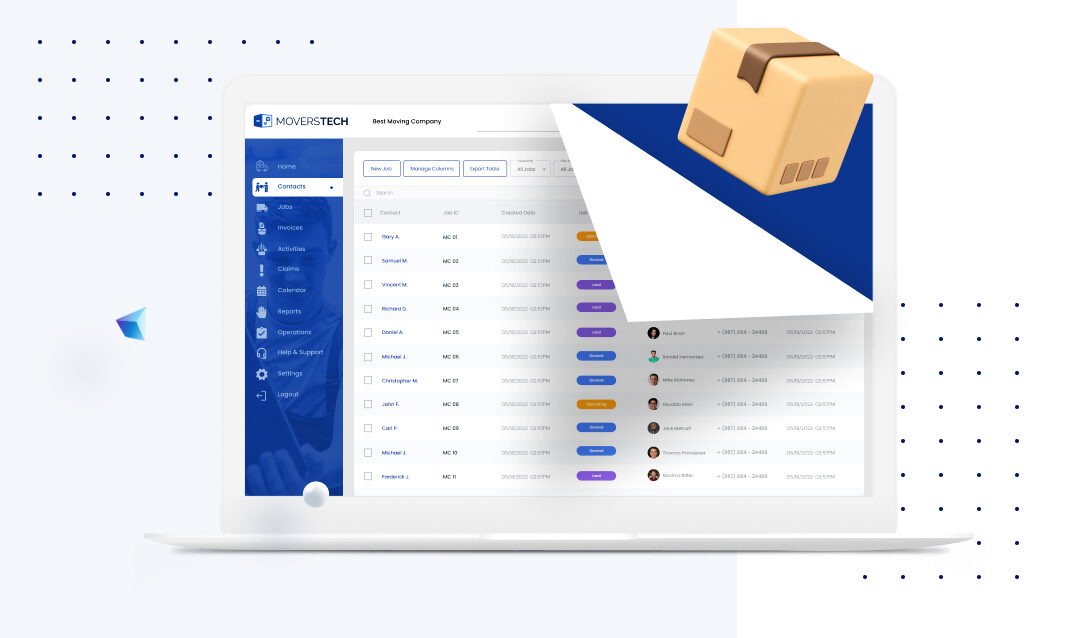Effective supply management is crucial for the moving industry. A moving company must ensure that supplies are well-managed to maintain uninterrupted operations. One way to achieve this is to manage supplies with a moving CRM. This article will explore how a CRM can help manage supplies effectively, leading to successful and well-coordinated moves.
The role of supply management in the moving industry
Accurate supply management is essential for moving companies. It ensures that the right resources are available when needed, reducing delays and extra costs. Proper supply management also helps in maintaining customer satisfaction by providing timely services. When resources are managed correctly, it also reduces stress on the moving team, allowing them to focus more on providing excellent service.
Common challenges faced in supply management without a CRM
Without a centralized system, a moving company relies on manual tracking of supplies, which often leads to inaccuracies. Movers frequently report shortages of packing materials like boxes and bubble wrap, causing delays as they have to make last-minute trips to purchase more packing materials. Manual supply management results in higher costs due to frequent urgent purchases and waste from over-purchasing. The lack of a systematic approach can lead to miscommunication and confusion among team members.

Features of a moving CRM for supply management
A moving CRM can transform supply management with several key features:
Centralized Database
A moving CRM stores all supply-related information in one place, allowing easy access and management. This centralized approach reduces the time spent searching for information and allows for quick updates, keeping everyone on the same page. It also provides a historical record of supply usage, which can be useful for future planning.
Real-Time Tracking
Monitoring resources in real-time allows for better management and quicker response to supply needs. This feature helps in immediately identifying when packing materials are low and need replenishing, preventing any disruption in operations. Real-time tracking also helps in planning for future moves by providing accurate data on current supply levels.
Automated Alerts
Setting up notifications for low stock and reorders ensures that supplies are always available when needed. These automated alerts reduce the need for constant manual checks and help prevent last-minute rushes to purchase materials. It also helps in managing budgets better by scheduling reorders at optimal times, avoiding peak pricing periods.
Entering and organizing supplies in the CRM
Data Entry
Inputting all supplies into the CRM system is the first step. This includes details such as type, quantity, condition, and location. Accurate data entry is crucial for effective management, and it helps in maintaining a clear and updated inventory. This detailed information also helps in tracking the usage and lifespan of supplies.
Categorization
Organizing supplies by type and usage makes it easier to access them when needed. Proper categorization helps in quickly identifying and locating supplies, saving time during the moving process. It also helps in planning purchases by providing a clear overview of which materials are used most frequently and need regular replenishment.

Tracking supply usage and inventory
Usage Reports
Generating reports on supply usage helps in better planning and resource allocation. These reports provide insights into which supplies are used most and during which periods. This information is vital for anticipating future needs and ensuring that the company is always prepared with the necessary supplies. Among the most important reports in moving are those that detail supply usage trends, helping managers accurately assess and manage inventory levels.
Identifying Trends
Analyzing usage patterns predicts future needs and avoids shortages. Identifying trends allows companies to adjust their inventory levels accordingly, preventing both overstocking and stockouts. This proactive approach helps in maintaining a smooth workflow and reducing the costs associated with emergency purchases.
Inventory Management
Maintaining optimal stock levels prevents overstocking or stockouts, leading to consistent operations. Effective inventory management helps in balancing supply levels, reducing waste, and avoiding the costs associated with last-minute purchases. It also frees up storage space, which can be utilized for other essential items. For more insights, check out this guide on best practices in inventory management.
Enhancing job planning with CRM
Resource Allocation
Assigning the right resources to the right jobs based on CRM data improves productivity. Proper resource allocation ensures that each moving job is equipped with the necessary supplies, reducing delays and improving overall service quality. This systematic approach also helps in optimizing the use of available resources.
Coordination
Enhancing coordination between dispatch and inventory teams through the CRM ensures that supplies are where they are needed. Improved coordination helps in avoiding miscommunication and delays, leading to a more streamlined moving process. It also ensures that all team members have access to up-to-date information, promoting better teamwork.
Efficiency
Improving job planning and execution ensures that all necessary supplies are available, leading to smoother operations. Efficient job planning helps in reducing downtime and increasing productivity. It also ensures that the moving team can focus on delivering quality service, knowing that all supplies are accounted for.
Benefits of using a moving CRM for supply management
Cost Savings
Reducing waste and optimizing supply use saves costs for the moving company. A moving CRM helps in managing budgets more effectively by preventing over-purchasing and reducing the need for urgent, often costly, supply runs. This leads to better financial management and increased profitability. When you reduce expenses with CRM software, the overall financial health of the company improves, allowing for more investment in other crucial areas.
Operational Efficiency
Streamlining operations leads to a smoother workflow and less downtime. A moving CRM helps in organizing tasks, scheduling reorders, and monitoring supply levels in real-time. This results in a more effective operation, where all team members know their roles and responsibilities, reducing confusion and errors.
Customer Satisfaction
Ensuring all necessary materials are available for every job leads to better service and happier customers. Satisfied customers are more likely to recommend the company to others, leading to increased business. A moving CRM helps in providing timely and reliable service, which is key to maintaining high customer satisfaction levels.

Transform your moving company with a CRM for supply management
Using a moving CRM to manage supplies can greatly enhance the effectiveness and performance of a moving company. It centralizes data, tracks supplies in real-time, and sends automated alerts. These features help in better planning, resource allocation, and coordination. Reducing costs and streamlining operations, a moving CRM ensures that all necessary supplies are available for every job, leading to higher customer satisfaction. Moving companies should consider adopting a CRM to manage supplies with a moving CRM. This change will lead to better resource management and overall operational success, helping companies get real-time reports and guaranteeing every move is well-supplied and effective.

